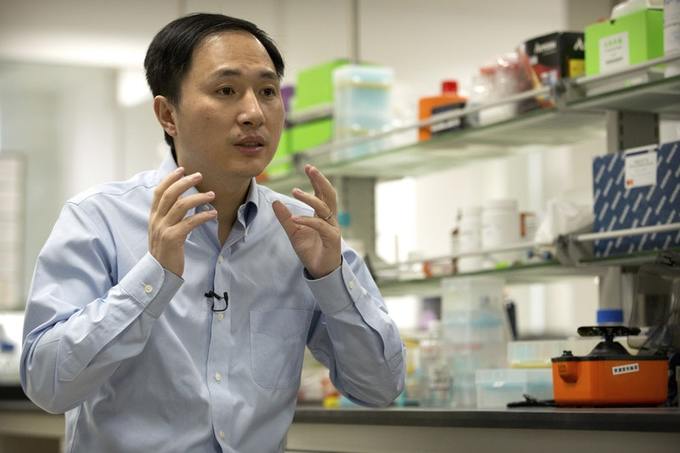
A scientist claims he helped create the world’s first genetically-modified babies during laboratory work in China.
The DNA of twin girls was altered with a powerful new tool capable of rewriting the very blueprint of life, researcher Dr He Jiankui says.
He said his goal was not to cure or prevent an inherited disease, but to try to bestow a trait that few people naturally have – an ability to resist possible future infection with HIV, the AIDS virus.
However, many mainstream scientists think it is too unsafe to try, and this kind of gene editing is banned in Britain and in the United States because the DNA changes can pass to future generations and risks harming other genes.
The researcher, He Jiankui of Shenzhen, said he altered embryos for seven couples during fertility treatments, with one pregnancy resulting thus far.
There is no independent confirmation of Mr He’s claim, and it has not been published in a journal, where it would be vetted by other experts.
He unveiled his research on Monday in Hong Kong to one of the organisers of an international conference on gene editing that is set to begin on Tuesday.
“I feel a strong responsibility that it’s not just to make a first, but also make it an example,” Mr He told the AP.
“Society will decide what to do next” in terms of allowing or forbidding such science, he added.
Some scientists were astounded to hear of the claim and strongly condemned it.
It is “unconscionable … an experiment on human beings that is not morally or ethically defensible”, said Dr Kiran Musunuru, a University of Pennsylvania gene editing expert and editor of a genetics journal.
Editing sperm, eggs or embryos is different – the changes can be inherited. China outlaws human cloning but not specifically gene editing.
Mr He studied at Rice and Stanford universities in the US before returning to his homeland to open a lab at Southern University of Science and Technology of China in Shenzhen, where he also has two genetics companies.
The US scientist who worked with him on this project after Mr He returned to China was physics and bioengineering professor Michael Deem, who was his adviser at Rice in Houston.
The Chinese researcher said he practised editing mice, monkey and human embryos in the lab for several years and has applied for patents on his methods.
He said he chose embryo gene editing for HIV because these infections were a big problem in China. He sought to disable a gene called CCR5 that forms a protein doorway that allows HIV, the virus that causes AIDS, to enter a cell.
All of the men in the project had HIV and all of the women did not, but the gene editing was not aimed at preventing the small risk of transmission, Mr He said.
Instead, the appeal was to offer couples affected by HIV a chance to have a child that might be protected from a similar fate.
He recruited couples through a Beijing-based AIDS advocacy group called Baihualin.
He said the gene editing occurred during IVF, or lab dish fertilisation.
First, sperm was “washed” to separate it from semen, the fluid where HIV can lurk.
A single sperm was placed into a single egg to create an embryo. Then the gene editing tool was used.
When the embryos were three to five days old, a few cells were removed and checked for editing. Couples could choose whether to use edited or unedited embryos for pregnancy attempts. Eleven embryos were used in six attempts before the twin pregnancy was achieved, Mr He said.
Tests suggest that one of the twins, born this month, had both copies of the intended gene altered and the other twin had just one altered, with no evidence of harm to other genes, Mr He said. People with one copy can still get HIV.
Several scientists reviewed materials that Mr He provided to the AP and said tests so far were insufficient to draw conclusions.
“I believe this is going to help the families and their children,” said Mr He. If it causes unwanted side effects or harm, “I would feel the same pain as they do and it’s going to be my own responsibility”, he added.
Source: AP